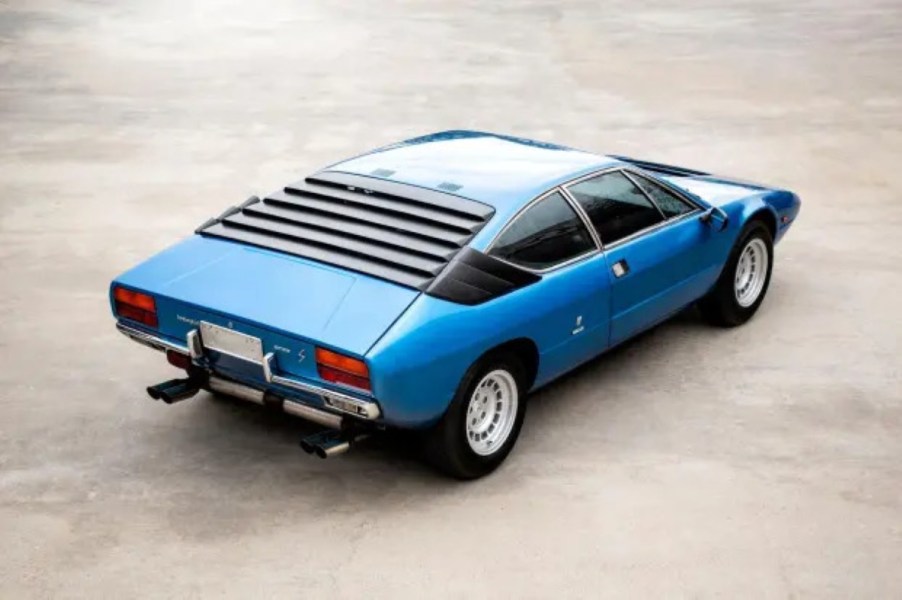
Like a Vacation Home, a Classic Lamborghini Could Be a Worthwhile Investment
People are always looking for investments, whether it’s real estate, stocks, bonds, CDs, DVDs, or a spare bedroom jam-packed with Dale Earnhardt memorabilia. Vacation homes are a fairly common mode of speculation nowadays, but supercars can often be the seeds of financial success. Both have upsides and drawbacks, and if you play your cards right, you have a nice asset to enjoy. But if you don’t want to mess with a second home’s upkeep, you could always invest in a classic Lamborghini.
Yes, it’s an expensive endeavor. But just like any worthwhile venture, one must be smart about their investment. So, if you don’t want to fill your walls full of collectible commemorative dinner plates, check out the classic Lamborghini investment advice below.
Picking a rare model without a sky-high price
Believe it or not, it’s possible to get a rare and cheap classic Lamborghini. Well, when we say cheap, we mean cheaper than one of their newer models. Lamborghini made plenty of limited-production supercars, grand tourers, and even an SUV that predates the Urus. However, most outside enthusiast groups have never seen them, let alone heard of them.
Some of the rarest classic Lamborghinis include the following:
Islero

A coupe/2+2 grand tourer with a 325-350 horsepower 4.0-liter V12 built from 1968 to 1969. Only 225 Islero and Islero S models were produced and are sitting near the $300,000 mark—roughly half the value of a Countach and about 10 times as rare.
Espada

Powered by the same engine, the four-seater fastback was built from 1968 to 1978 over three variations—Series I, Series II, and Series III. Espada prices have climbed recently, listings and sales on Classic.com indicate, spanning over 1,200 cars produced. The approximate average values are $92,000 for Series III, $139,000 for Series II, and $155,000 for the inaugural Series I.
Jarama

Replacing the Islero, the Jarama 400 GT and Jarama S were on sale for seven years, but only 327 left the factory. There isn’t much price distinction between the 350-horsepower Jarama GT and the 365-horsepower Jarama S since few have left private ownership. But they are similar to the Espada.
Urraco

Around 800 examples of the company’s entry-level mid-engine supercar were built between 1972 and 1979. Restored models rarely top $80,000, and the later Urracos are more abundant and less expensive. It had a trio of small V8s to choose from, but this classic Lamborghini was particularly prone to electrical malfunctions.
Jalpa

Sold alongside the Countach, the Bertone-styled targa-top supercar had a 255-horsepower 3.5-liter V8. Despite only 410 produced, the Jalpa is one of the most affordable classic Lamborghini models. Few restored models have sold above the $100,000 mark, which is about one-fifth the price of a current Countach or an Aventador when it was new.
Is classic Lamborghini maintenance all that bad?
Classic Lamborghinis aren’t Toyotas. They won’t run faultlessly every day for 200,000 miles. But just like any vacation home may need some maintenance, even if it isn’t a primary residence, it’s worth it. No investment can go unmaintained.
This is the largest area of concern for many potential classic Lamborghini owners. And first off, your Espada, Miura, Faena, LM002, or any other exclusive elderly model probably can’t be worked on by the youngsters at the local Lamborghini dealership. Therefore, you may have to search for that “guy” or “gal” that knows the complexities of the Islero’s sextet of Weber carbs.
Nevertheless, sourcing all these extraordinarily rare parts can be a challenge. Luckily, the manufacturer can help—something you don’t get with other brands. Lamborghini Polo Storico is a relatively new arm of the company in Sant’Agata Bolognese. The aim is to create a benchmark for classic Lamborghini owners worldwide.
Lamborghini Polo Storico has four primary areas of expertise: archive, certification, restoration, and original spare parts. Available on everything from the 350 GT to the Diablo, the company has thus far covered 65% of components across the historic fleet.
How can you finance a classic Lamborghini?
Now that you realize maintenance will be expensive, but the Italian soundtrack makes up for it, it’s time to figure out how to buy the car. You can take out a mortgage on a vacation home. Unfortunately, not on a classic Lamborghini. But like any big purchase, you can get a loan.
VINwiki’s shrewd-negotiating Ed Bolian—a former Lamborghini Atlanta sales director—gave LendingTree five essential tips to increase your chances of qualifying with potential lenders:
- A 740+ credit score.
- Comparable auto loan history—the requested loan amount should be within 50% of the amount you borrowed for your last car loan.
- Reasonable loans between 48 and 84 months.
- A loan-to-value ratio of 80%—much like a mortgage.
- Monthly debt-to-income ratio of less than 50%.
How can you offset the cost of a classic Lamborghini and all the upkeep?
It may make potential buyers feel better that they don’t have to wait until they sell their classic Lamborghini to recoup their investment costs. There are plenty of ways to make money while keeping the car.
If your Jarama, Urraco, Gallardo, or other Lambo is in concours condition, you can rent it out for photo shoots. Your classic Lamborghini can be used as a magazine cover photo or a supercar calendar background. Owners may want to check with their insurance providers for a rental clause, but movie production companies often use classic cars in films, shows, and commercials. The same is true of special occasions like wedding days and senior proms—obviously not them driving, but you chauffeuring.
Regardless, one of the most significant offsets is the sheer enjoyment of owning a classic Lamborghini. Even if older models don’t have the performance of modern supercars, some certainly outweigh them in glamour.


